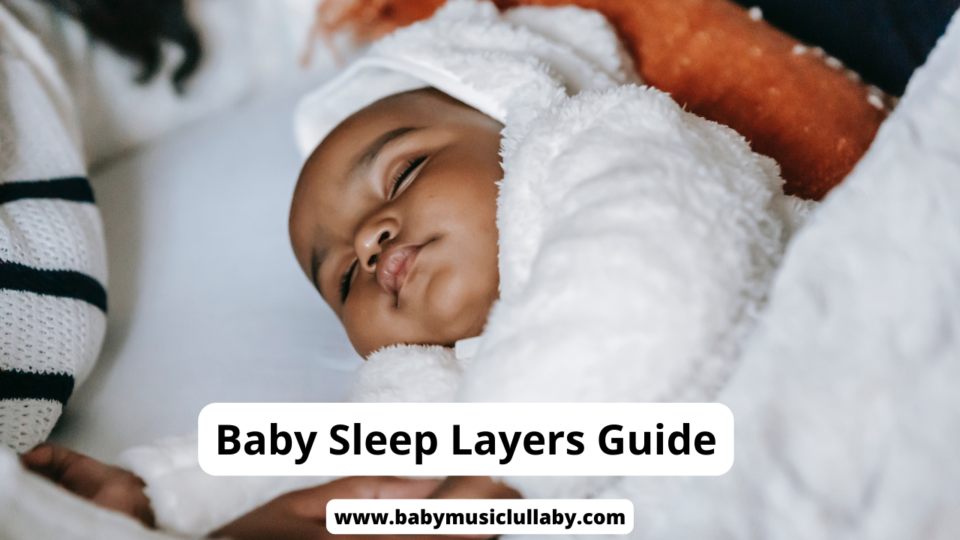Contents
Introduction
When it comes to your baby’s sleep, creating the perfect sleep environment is essential. One important factor to consider is the choice of sleep layers. The right sleep layers can provide comfort, warmth, and safety for your little one throughout the night. In this comprehensive guide, we will explore everything you need to know about baby sleep layers, from selecting the appropriate clothing to maintaining a suitable temperature. Let’s dive in!
1. Understanding the Importance of Sleep Layers
Sleep layers serve multiple purposes in creating a comfortable sleep environment for your baby. They help regulate body temperature, provide a sense of security, and prevent overheating or excessive coldness. Proper sleep layers ensure that your baby remains cozy and safe throughout the night.
2. Choosing the Right Sleepwear for Your Baby
Factors to Consider
When selecting sleepwear for your baby, consider factors such as the ambient temperature, your baby’s age, and any specific needs or preferences they may have. It’s essential to strike a balance between warmth and breathability.
Recommended Fabrics
Opt for soft, natural fabrics that are breathable and gentle on your baby’s skin. Cotton and bamboo are excellent choices as they are lightweight, moisture-wicking, and hypoallergenic.
Size and Fit
Ensure that the sleepwear fits your baby properly. Avoid clothing that is too tight or restrictive, as it may impede movement or cause discomfort. On the other hand, loose sleepwear can pose safety risks.
3. Layering Techniques for Different Temperatures
Cold Weather Layering
In colder temperatures, layering is crucial to keep your baby warm. Start with a base layer of a onesie or bodysuit, followed by a cozy sleeper or footed pajamas. Add an additional layer such as a sleep sack or wearable blanket for extra warmth.
Moderate Weather Layering
In moderate temperatures, a onesie or a lightweight sleeper is usually sufficient. You can consider using a sleep sack or swaddle to provide a sense of security and warmth without overheating.
Warm Weather Layering
In warmer weather, opt for light and breathable sleepwear, such as a onesie or a light sleeper. You can skip additional layers or use a thin muslin sleep sack if needed.
4. Maintaining Optimal Sleep Temperature
Room Temperature Considerations
The ideal room temperature for baby sleep is around 20-22 degrees Celsius (68-72 degrees Fahrenheit). Use a reliable thermometer to monitor the temperature and ensure it remains within this range.
Monitoring and Adjusting
Regularly check the room temperature, especially during seasonal changes. Adjust the sleep layers accordingly to maintain a comfortable sleep environment for your baby.
5. Safety Guidelines for Sleep Layers
Avoiding Loose Bedding
To reduce the risk of suffocation and Sudden Infant Death Syndrome (SIDS), it’s crucial to avoid using loose bedding such as blankets, pillows, or stuffed animals in the crib. Instead, opt for sleep sacks, swaddles, or fitted sheets.
Safe Sleep Practices
Always follow safe sleep practices recommended by experts, such as placing your baby on their back to sleep, using a firm mattress, and ensuring a clutter-free sleep area.
6. Frequently Asked Questions (FAQs)
Q1: How many layers should my baby wear to sleep?
The number of layers depends on the ambient temperature. As a general guideline, start with a base layer and add additional layers as needed to keep your baby comfortably warm.
Q2: What should my baby wear under a sleep sack?
Under a sleep sack, a onesie or a lightweight sleeper is typically sufficient. Adjust the layers based on the temperature and your baby’s comfort.
Q3: How can I prevent my baby from overheating during sleep?
To prevent overheating, monitor the room temperature, choose breathable fabrics, and avoid overdressing your baby. Feel the back of their neck or use a thermometer to check if they are too warm.
Q4: Are sleep sacks safe for babies?
Sleep sacks designed specifically for infants are considered safe and can provide a secure alternative to loose blankets. Follow the manufacturer’s instructions and choose the appropriate size for your baby.
Q5: How often should I check the room temperature during the night?
It’s a good practice to check the room temperature periodically, especially before bedtime and during nighttime feedings or diaper changes. Ensure that the temperature remains within the recommended range.

7. Conclusion
Creating the right sleep layers for your baby is crucial for their comfort and safety. By understanding the importance of sleep layers, choosing suitable sleepwear, and maintaining an optimal sleep temperature, you can provide a cozy and secure sleep environment for your little one. Remember to prioritize safety and follow the recommended guidelines for safe sleep practices. Sweet dreams!

 Subscribe to Get Soothing Lullabies to Help Your Baby to Sleep
Subscribe to Get Soothing Lullabies to Help Your Baby to Sleep
1 comment
[…] Baby Sleep Layers Guide […]